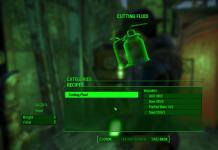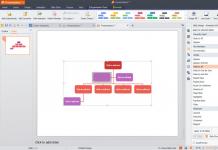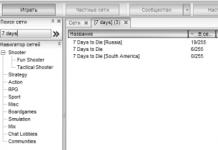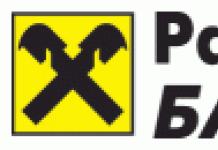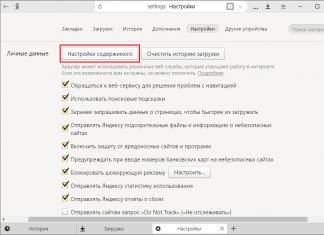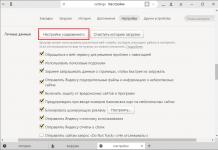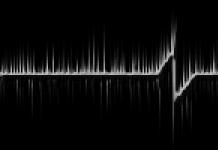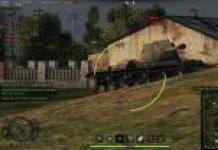LPD - Low Power Device - low-power device.
PMR - Personal Mobile Radio - Personal Mobile Radio.
Hence, the LPD/PMR range is a frequency range specially allocated for the operation of low-power radio stations for individual use.
Registration of LPD/PMR radio stations is not requiredWhat is it for?
Various bands of the radio frequency spectrum are used by civil, military, special, commercial and other services that support human life. Individual frequency ratings or small bands may, for one reason or another, not satisfy business or commercial needs, but are quite suitable for amateur or private needs. These ranges are open for general use.
The LPD/PMR range is in general use in Russia relatively recently and coincides with the European range for similar applications. Despite the fact that the power of radio stations permitted for use is significantly limited, its location in the upper part of the VHF, and therefore the good penetrating ability of radio waves in the range, allows it to be successfully used for communication in urban environments. Industrial interference does not have a strong impact on this part of the radio spectrum. And when working in open areas, the communication range increases significantly due to the absence of buildings at all.
69 frequency range channels
LPD (433.075-434.775 MHz)

8 frequency range channels
PMR (446.00625-446.09375 MHz)

What is CTCSS and DCS:
These are subtones that are mixed into the transmitter signal. They are not distinguishable by ear, but the tone squelch in the station (if there is one) distinguishes them and opens only to the tone that you set. For example, you are communicating with a correspondent, and builders start working on the same frequency: you simply turn off the noise cancellers and you no longer hear the builders (but everyone can hear you), they no longer bother you.


How is CTCSS different from DCS?
CTCSS are simply sine tones mixed into the transmitted wanted signal.
DCS - tones formed from digital sequences.
To the ear, both sound slightly different, but it is still low-frequency noise mixed with your voice on the air.
Follow the news in our VKontakte group
In Russia and other European countries there are certain frequencies that can be used without permission. They are also called license-free frequencies. There are a range LPD(eng. Low Power Device) and range PMR(English: Private Mobile Radio, pm-er).
LPD- radio frequency range for low-power devices, included in the international network of industrial, scientific and medical frequencies (ISM).
In most countries of the world, this range is allowed for free use with some reservations - as a rule, with a limitation of the transmitter power and strictly assigned frequencies for reception and transmission. In most countries, you cannot use an antenna with a gain greater than 0 dBi, as well as external antennas.
Many devices for various purposes can and do operate in the LPD433 range, such as: radio remote controls for opening garage doors, car radio alarms, as well as radio stations that, accordingly, do not require registration and permits - the so-called. license-free radio stations.
The restrictions imposed on freely sold license-free LPD radio stations, as well as on PMR radio stations, do not allow organizing an effective communication system (using external antennas and/or radio repeaters) without the control of government agencies.
In Russia, the use of low-power devices, incl. radio stations in the LPD433 range, is permitted with a transmitter power of no more than 10 mW. In practice, many manufactured devices (walkie-talkies, car alarms) have a power of up to hundreds of milliwatts or units of watts; Formally, the procedure for their registration and certification is circumvented by switching them to a low-power compatible mode with a limit of 10 mW.
PMR is a European license-free system (commonly referred to as PMR446) for mobile radio communications in the VHF range with a frequency of 446,000-446,100 MHz and a maximum output power of 0.5 W. Intended exclusively for private use and to meet the domestic radio communication needs of the general public. It is analogous to the North American FRS system. It is common to use channel 8 as the calling channel.
LPD channels located at frequencies from 433.075 MHz to 434.775 MHz in steps of 25 kHz - a total of 69 channels.
| Channel | Frequency (MHz) | Channel | Frequency (MHz) | Channel | Frequency (MHz) |
|---|---|---|---|---|---|
| 1 | 433.075 | 24 | 433.650 | 47 | 434.225 |
| 2 | 433.100 | 25 | 433.675 | 48 | 434.250 |
| 3 | 433.125 | 26 | 433.700 | 49 | 434.275 |
| 4 | 433.150 | 27 | 433.725 | 50 | 434.300 |
| 5 | 433.175 | 28 | 433.750 | 51 | 434.325 |
| 6 | 433.200 | 29 | 433.775 | 52 | 434.350 |
| 7 | 433.225 | 30 | 433.800 | 53 | 434.375 |
| 8 | 433.250 | 31 | 433.825 | 54 | 434.400 |
| 9 | 433.275 | 32 | 433.850 | 55 | 434.425 |
| 10 | 433.300 | 33 | 433.875 | 56 | 434.450 |
| 11 | 433.325 | 34 | 433.900 | 57 | 434.475 |
| 12 | 433.350 | 35 | 433.925 | 58 | 434.500 |
| 13 | 433.375 | 36 | 433.950 | 59 | 434.525 |
| 14 | 433.400 | 37 | 433.975 | 60 | 434.550 |
| 15 | 433.425 | 38 | 434.000 | 61 | 434.575 |
| 16 | 433.450 | 39 | 434.025 | 62 | 434.600 |
| 17 | 433.475 | 40 | 434.050 | 63 | 434.625 |
| 18 | 433.500 | 41 | 434.075 | 64 | 434.650 |
| 19 | 433.525 | 42 | 434.100 | 65 | 434.675 |
| 20 | 433.550 | 43 | 434.125 | 66 | 434.700 |
| 21 | 433.575 | 44 | 434.150 | 67 | 434.725 |
| 22 | 433.600 | 45 | 434.175 | 68 | 434.750 |
| 23 | 433.625 | 46 | 434.200 | 69 | 434.775 |
For eight-channel stations the grid is as follows:
Can use pilot signal, analogue system CTCSS or digital noise reduction system DCS codes .
Frequency bands intended for unlicensed use according to the rules and laws of different countries.
(PMR446, Personal Mobile Radio) is a European license-free mobile radio system in the VHF range with a frequency of 446.000-446.100 MHz and a maximum output power of 0.5 W. Intended exclusively for private use by the public. The range is intended for use in Russia and European countries.
In this range, the use of stations with a power of up to 0.5 W is permitted in the United States.
PMR frequency grid
No. Frequency
1 446.00625
2 446.01875
3 446.03125
4 446.04375
5 446.05625
6 446.06875
7 446.08125
8 446.09375
[collapse]
LPD
LPD (LPD433, Lower Power Device) is a license-free mobile radio communication system in the VHF range with a frequency of 433.075-434.775 MHz and a maximum output power of 0.01 W. Intended for private use by the public. The range is intended for use in Russia and some European countries.
LPD frequency grid
No. Frequency
1(1) 433.075
2(2) 433.100
3 433.125
4 433.150
5 433.175
6(3) 433.200
7 433.225
8 433.250
9 433.275
10(4) 433.300
11 433.325
12(5) 433.350
13 433.375
14 433.400
15 433.425
16 433.450
17(6) 433.475
18 433.500
19 433.525
20 433.550
21 433.575
22 433.600
23(7) 433.625
24 433.650
25 433.675
26 433.700
27 433.725
28 433.750
29 433.775
30(8) 433.800
31 433.825
32 433.850
33 433.875
34 433.900
35 433.925
36 433.950
37 433.975
38 434.000
39 434.025
40 434.050
41 434.075
42 434.100
43 434.125
44 434.150
45 434.175
46 434.200
47 434.225
48 434.250
49 434.275
50 434.300
51 434.325
52 434.350
53 434.375
54 434.400
55 434.425
56 434.450
57 434.475
58 434.500
59 434.525
60 434.550
61 434.575
62 434.600
63 434.625
64 434.650
65 434.675
66 434.700
67 434.725
68 434.750
69 434.775
[collapse]
In which countries are the PMR and LPD bands allowed?
This data will help you make the right choice of radio communications without violating the legislation of the European country where you will travel. Having a walkie-talkie, you will always stay in touch with each other, regardless of the availability of a cellular operator. In Russia, LPD and PMR bands are allowed, and the registration of license-free radio stations was canceled in 2007.
country use conditions
Austria allowed Free
Belgium prohibited Prohibited
Germany allowed freely
Holland allowed freely
Greece allowed freely
Denmark prohibited prohibited
Ireland prohibited prohibited
Italy is allowed from channel No. 1 to No. 20 freely
Iceland allowed Free
Spain prohibited prohibited
Cyprus allowed Free
Latvia prohibited prohibited
Lithuania prohibited prohibited
Luxembourg prohibited prohibited
Norway allowed Free
Poland allowed Free
Portugal prohibited prohibited
United Kingdom prohibited prohibited
Slovakia allowed Free
Slovenia allowed Free
Türkiye prohibited prohibited
Finland prohibited prohibited
France allowed Free
Sweden allowed Free
Switzerland prohibited prohibited
Croatia prohibited prohibited
Estonia prohibited prohibited
[collapse]
PMR (446 MHz)
country of use Terms
Austria allowed Free
Belgium allowed Free
Hungary allowed Free
Germany allowed Free
Holland allowed Free
Greece allowed Free
Denmark allowed Free
Ireland is allowed freely, but subtones must be checked
Italy general permission allowed
Iceland allowed Free
Spain allowed Free
Cyprus allowed Free
Latvia is allowed, you must have a station type approval
Lithuania allowed Free
Luxembourg allowed Free
Madeira and Azores allowed Free
Malta allowed Free
Norway allowed Free
Poland allowed Free
Portugal allowed Free
United Kingdom allowed Free
Slovakia allowed Free
Slovenia allowed Free
Türkiye Permitted Nominal Permit
Finland allowed Free
France allowed Free
Croatia allowed Free
Czech Republic allowed general permit
Sweden allowed Free
Switzerland allowed Free
Estonia allowed Free
[collapse]
FRS
FRS (Family Radio Service) is a license-free personal mobile radio communication system over short distances in the Americas in the UHF range at frequencies 462 MHz - 467 MHz.
The range includes 14 simplex radio channels with a step of 25 kHz. The power of radio stations is 0.5 W.
FRS frequency grid
No. Frequency
1 462.5625
2 462.5875
3 462.6125
4 462.6375
5 462.6625
6 462.6875
7 462.7125
8 467.5625
9 467.5875
10 467.6125
11 467.6375
12 467.6625
13 467.6875
14 467.7125
[collapse]
GMRS
GMRS (General Mobile Radio Service) is a license-free range intended for use in the United States and Canada and includes 16 radio channels with a step of 25 kHz. The power of radio stations is from 1 W.
In this range, a distinction is made between lower GMRS and upper GMRS. Most often, low-cost, non-professional radios use lower GMRS to expand the FRS range. GMRS 462 MHz - (462.5625-462.7250 MHz), power allowed up to 2 W in the United States.


